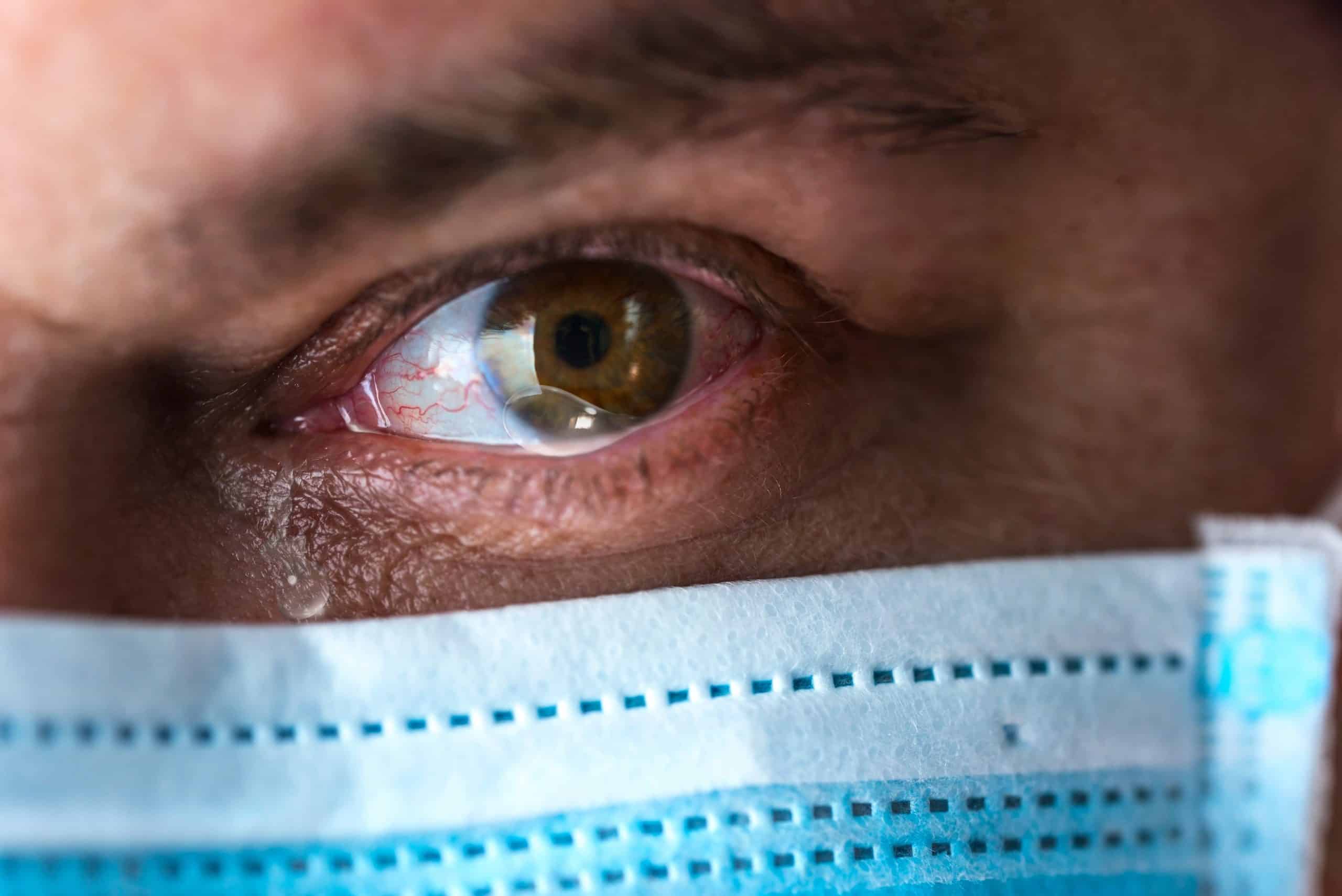Widespread use of face masks since the COVID-19 outbreak has given rise to a new phenomenon in the ophthalmic world.
Mask-associated dry eye (MADE) is a new term that’s been coined in response to reports of ocular irritation and dryness among regular mask users, and has been supported by a recent review published in the journal Ophthalmology and Therapy.

As a result, the Centre for Ocular Research & Education (CORE) at the University of Waterloo’s School of Optometry and Vision Science in Canada is advising eyecare professionals on how to recognise MADE and methods to mitigate the condition.
According to CORE, when a mask sits loosely against the face exhaled air can move upwards, forcing a stream of air up and over the surface of the eye. This causes conditions that accelerate tear film evaporation, leading to dry spots on the ocular surface and discomfort.
“Face masks are crucial in the fight against COVID-19, and eyecare professionals are well-positioned to provide patients with advice on appropriate wear in order to maximise eye comfort,” CORE director Professor Lyndon Jones, a renowned contact lens and dry eye researcher, said.
“Asking patients about their mask-wearing experiences and providing a few helpful tips takes little time and can make a substantial difference.”
In addition to worsening symptoms in patients with pre-existing dry eye disease, MADE can also affect the elderly who typically have a poorer quality tear film, contact lens wearers, and masked people working extended hours in air-conditioned settings and/or while using digital screens.
Jones said MADE may also encourage people to rub their eyes for temporary relief, increasing the likelihood of coronavirus infection through the mouth, nose, and to a lesser extent, the eye.
Guidance for practitioners
Experts at CORE have suggested that eyecare professionals consider incorporating three MADE-related actions into their examination:
- Consider the role of the face mask if there are worsening symptoms in patients with confirmed dry eye , or if patients report dry, uncomfortable eyes or variable vision for the first time.
- Routinely ask all patients how their eyes feel while wearing a mask. Many may not think to volunteer their experiences or associate their symptoms with mask use.
- Provide advice on alleviating symptoms, including using a new CORE-developed infographic to show how simple steps can provide relief and minimise reoccurrence.
Tips for patients
- Ensure masks are worn appropriately, particularly with spectacles or sunglasses. A taped top edge that does not interfere with blinking may help.
- Apply lubricating drops.
- Limit time in air-conditioned environments and take regular breaks from digital devices.
- Patients should first check with their eyecare practitioner for advice and to rule out other cases.
Jones said MADE should not be used to support anti-mask wearing sentiments.
“Responsibly wearing a mask, even when having to contend with eye dryness, is a critical part of overcoming the global pandemic,” he said.
“The good news is that we understand MADE and can address it—an opportunity for eyecare professionals to further communicate their knowledge and ongoing value to patients at a time when sound, scientific guidance is needed more than ever.”
More reading
Study: AMD patients at higher risk of COVID-19 death
COVID-19 detected after eye exams of asymptomatic patients
Dispelling myths around contact lens wear and COVID-19




